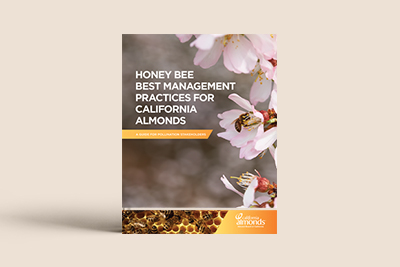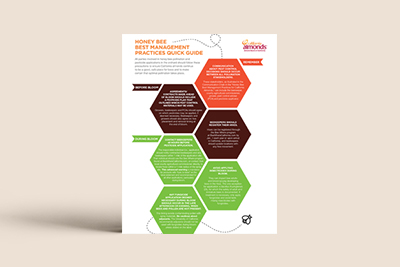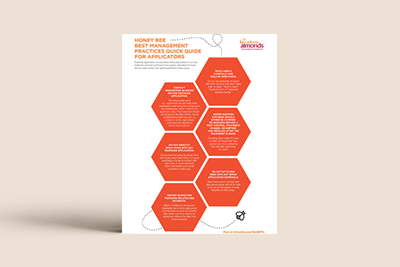Honey Bee Best Management Practices.
Almond growers, beekeepers and other pollination stakeholders are responsible for creating an environment that supports honey bees in pollinating almond trees. Those responsible for pollination and pest management during bloom should establish a clear communication chain – while each person in the chain holds specific tasks, ensuring the right information is shared at the right time with the right person is a mutual responsibility.
As part of an ongoing commitment to support the almond industry in protecting honey bee health, the Almond Board of California offers pollination stakeholders a comprehensive guide: the Honey Bee Best Management Practices (BMPs). Developed with input from the almond community, beekeepers, researchers, UC Davis, California and U.S. regulators, and chemical registrants, the Honey Bee BMPs represent the Almond Board’s most extensive educational documents, to date, on how to ensure California almond orchards remain a safe and healthy place for all pollinators, including honey bees. This resource lays out simple, practical steps that almond growers, as well as beekeepers, Pest Control Advisers and pesticide applicators, can take to protect and promote pollinator health in and around almond orchards.





